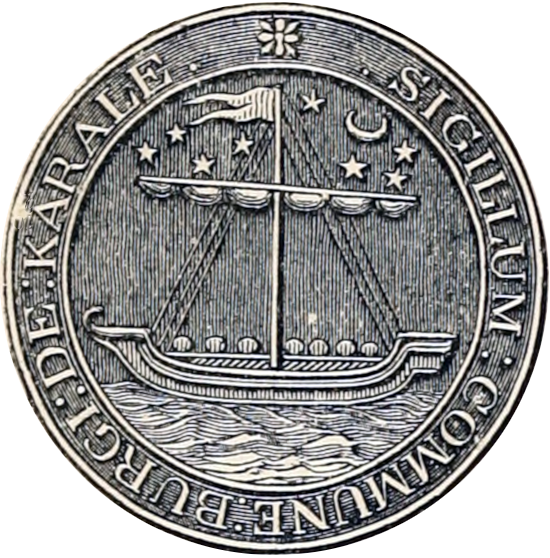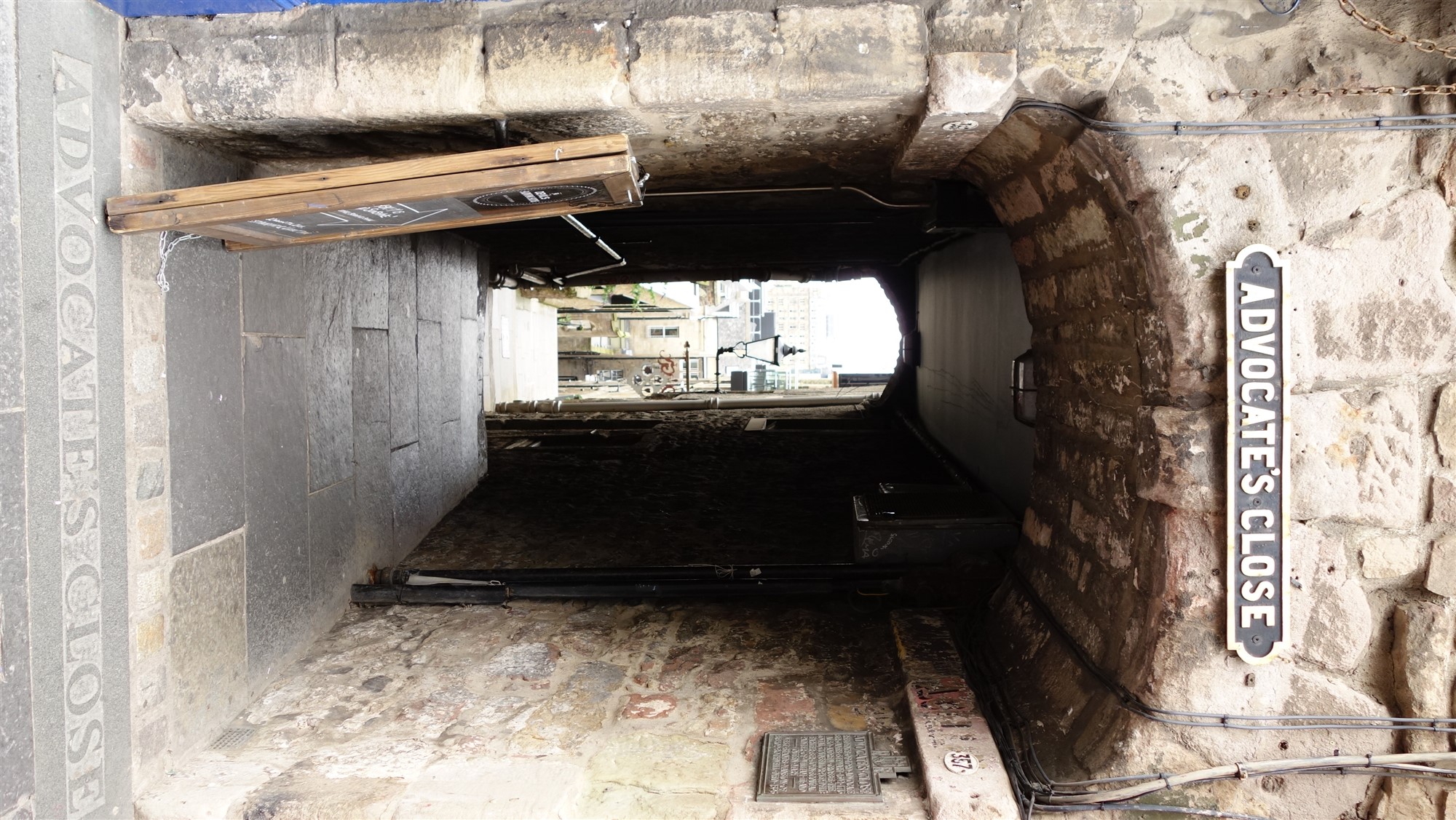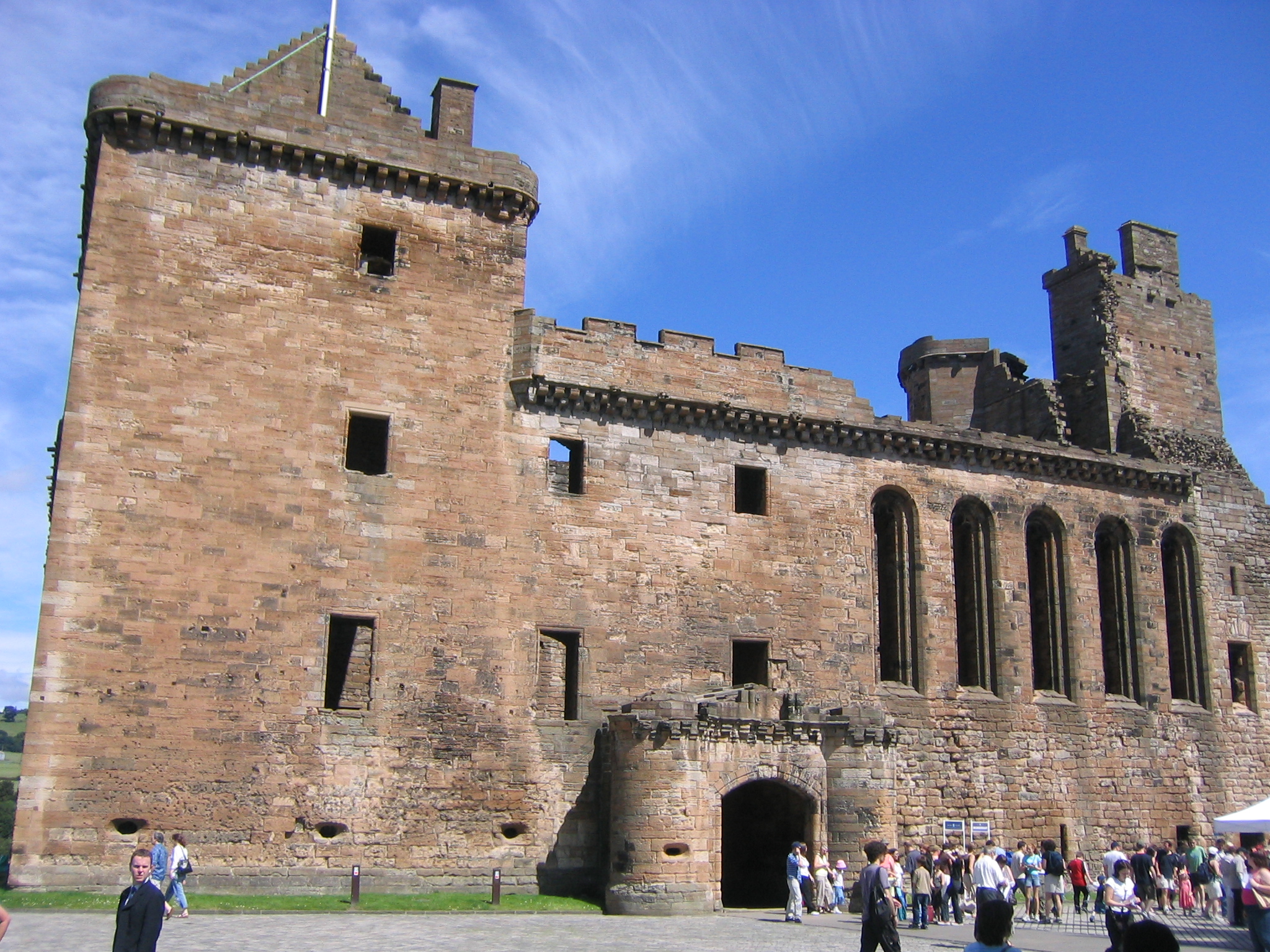|
Clement Cor
Clement Cor of Redwalls (1533-1608) was a Scottish merchant based in Edinburgh and St Andrews. Edinburgh career Cor was the eldest son of Andrew Cor, a merchant in Edinburgh. Cor became a burgess of Edinburgh in 1566 and served the burgh council as a Dean of Guild, and Bailie. He acquired a property in Advocates Close in 1579 and his house, built or rebuilt around 1590, is a rare survival of an Edinburgh merchant's house of this date. A painted renaissance ceiling was discovered in the house in 2010 and dated by dendrochronology to Cor's period of ownership. In September 1596, with the physician Gilbert Moncreiff and kirk minister Robert Bruce he interviewed a woman from Nokwalter in Perth, Christian Stewart, who was accused of causing the death of Patrick Ruthven by witchcraft. She confessed she had obtained a cloth from Isobel Stewart to bewitch Patrick Ruthven, and repeated this confession to the king and Sir George Home at Linlithgow Palace. She was found guilty of witchcraf ... [...More Info...] [...Related Items...] OR: [Wikipedia] [Google] [Baidu] |
Fife
Fife (, ; gd, Fìobha, ; sco, Fife) is a council area, historic county, registration county and lieutenancy area of Scotland. It is situated between the Firth of Tay and the Firth of Forth, with inland boundaries with Perth and Kinross (i.e. the historic counties of Perthshire and Kinross-shire) and Clackmannanshire. By custom it is widely held to have been one of the major Pictish kingdoms, known as ''Fib'', and is still commonly known as the Kingdom of Fife within Scotland. A person from Fife is known as a ''Fifer''. In older documents the county was very occasionally known by the anglicisation Fifeshire. Fife is Scotland's third largest local authority area by population. It has a resident population of just under 367,000, over a third of whom live in the three principal towns, Dunfermline, Kirkcaldy and Glenrothes. The historic town of St Andrews is located on the northeast coast of Fife. It is well known for the University of St Andrews, the most ancient univers ... [...More Info...] [...Related Items...] OR: [Wikipedia] [Google] [Baidu] |
16th-century Scottish People
The 16th century begins with the Julian year 1501 ( MDI) and ends with either the Julian or the Gregorian year 1600 ( MDC) (depending on the reckoning used; the Gregorian calendar introduced a lapse of 10 days in October 1582). The 16th century is regarded by historians as the century which saw the rise of Western civilization and the Islamic gunpowder empires. The Renaissance in Italy and Europe saw the emergence of important artists, authors and scientists, and led to the foundation of important subjects which include accounting and political science. Copernicus proposed the heliocentric universe, which was met with strong resistance, and Tycho Brahe refuted the theory of celestial spheres through observational measurement of the 1572 appearance of a Milky Way supernova. These events directly challenged the long-held notion of an immutable universe supported by Ptolemy and Aristotle, and led to major revolutions in astronomy and science. Galileo Galilei became a champion o ... [...More Info...] [...Related Items...] OR: [Wikipedia] [Google] [Baidu] |
Businesspeople From Edinburgh
A businessperson, businessman, or businesswoman is an individual who has founded, owns, or holds shares in (including as an angel investor) a private-sector company. A businessperson undertakes activities (commercial or industrial) for the purpose of generating cash flow, sales, and revenue by using a combination of human, financial, intellectual, and physical capital with a view to fueling economic development and growth. History Prehistoric period: Traders Since a "businessman" can mean anyone in industry or commerce, businesspeople have existed as long as industry and commerce have existed. "Commerce" can simply mean "trade", and trade has existed through all of recorded history. The first businesspeople in human history were traders or merchants. Medieval period: Rise of the merchant class Merchants emerged as a "class" in medieval Italy (compare, for example, the Vaishya, the traditional merchant caste in Indian society). Between 1300 and 1500, modern accountin ... [...More Info...] [...Related Items...] OR: [Wikipedia] [Google] [Baidu] |
Crail
Crail (); gd, Cathair Aile) is a former royal burgh, parish and community council area (Royal Burgh of Crail and District) in the East Neuk of Fife, Scotland. The locality has an estimated population of 1,630 (2018). Etymology The name ''Crail'' was recorded in 1148 as ''Cherel'' and in 1153 as ''Karel''. The first element is the Pictish ''*cair'' (c.f. Welsh ''caer'') meaning "fort", though this word seems to have been borrowed into Gaelic. The second element may be either Gaelic ''ail'', "rocks", or more problematically Pictish ''*al''; no certain instance of this word exists in P-Celtic. However, if the generic element were Pictish, then this is likely of the specific. History The site on which the parish church is built appears to have religious associations that pre-date the parish church's foundation in early mediaeval times, as evidenced by an 8th-century cross-slab preserved in the church. The parish church was itself dedicated (in the 13th-century) to the early hol ... [...More Info...] [...Related Items...] OR: [Wikipedia] [Google] [Baidu] |
St Andrews Cathedral
The Cathedral of St Andrew (often referred to as St Andrews Cathedral) is a ruined cathedral in St Andrews, Fife, Scotland. It was built in 1158 and became the centre of the Medieval Catholic Church in Scotland as the seat of the Archdiocese of St Andrews and the Bishops and Archbishops of St Andrews. It fell into disuse and ruin after Catholic mass was outlawed during the 16th-century Scottish Reformation. It is currently a monument in the custody of Historic Environment Scotland. The ruins indicate that the building was approximately long, and is the largest church to have been built in Scotland. History Founding and development The cathedral was founded to supply more accommodation than the older church of St. Regulus (St. Rule) afforded. This older church, located on what became the cathedral grounds, had been built in the Romanesque style. Today, there remains the square tower, 33 metres (108 feet) high, and the quire, of very diminutive proportions. On a plan of th ... [...More Info...] [...Related Items...] OR: [Wikipedia] [Google] [Baidu] |
Gentleman Adventurers Of Fife
The Gentleman Adventurers of Fife or Fife Adventurers were a group of 11 noblemen-colonists, largely from eastern Fife, awarded rights from King James VI to colonise the Isle of Lewis in 1598. Background In 1597, the MacLeod clan chiefs were served with papers from the government stating that despite their centuries-long feudal tenure of the Isle of Lewis, their lack of legal paperwork exposed the lands to claims from the Crown. This stemmed from an Act of Parliament requiring all Highland clan chiefs to prove legal ownership of their land. This head-over-heels legislation exposed many long-held ancestral lands to seizure. The generally title-less lands of the Highlands and islands became a target for the more document-conscious Lowlanders. Legally trained nobility were the first to take opportunity of this, creating papers for lands with which they had no historical connection. The re-colonisation of Lewis King James VI had the aim of beginning the "civilising" or "de-Gaelicis ... [...More Info...] [...Related Items...] OR: [Wikipedia] [Google] [Baidu] |
Isle Of Lewis
The Isle of Lewis ( gd, Eilean Leòdhais) or simply Lewis ( gd, Leòdhas, ) is the northern part of Lewis and Harris, the largest island of the Western Isles or Outer Hebrides archipelago in Scotland. The two parts are frequently referred to as if they were separate islands. The total area of Lewis is . Lewis is, in general, the lower-lying part of the island: the other part, Harris, is more mountainous. Due to its larger area and flatter, more fertile land, Lewis contains three-quarters of the population of the Western Isles, and the largest settlement, Stornoway. The island's diverse habitats are home to an assortment of flora and fauna, such as the golden eagle, red deer and seal, and are recognised in a number of conservation areas. Lewis has a Presbyterian tradition and a rich history. It was once part of the Norse Kingdom of the Isles. Today, life is very different from elsewhere in Scotland, with Sabbath observance, the Scottish Gaelic language and peat cutting retainin ... [...More Info...] [...Related Items...] OR: [Wikipedia] [Google] [Baidu] |
St Andrews
St Andrews ( la, S. Andrea(s); sco, Saunt Aundraes; gd, Cill Rìmhinn) is a town on the east coast of Fife in Scotland, southeast of Dundee and northeast of Edinburgh. St Andrews had a recorded population of 16,800 , making it Fife's fourth-largest settlement and 45th most populous settlement in Scotland. The town is home to the University of St Andrews, the third oldest university in the English-speaking world and the oldest in Scotland. It was ranked as the best university in the UK by the 2022 Good University Guide, which is published by ''The Times'' and ''The Sunday Times''. According to other rankings, it is ranked as one of the best universities in the United Kingdom. The town is named after Saint Andrew the Apostle. The settlement grew to the west of St Andrews Cathedral, with the southern side of the Scores to the north and the Kinness Burn to the south. The burgh soon became the ecclesiastical capital of Scotland, a position which was held until the Scottish ... [...More Info...] [...Related Items...] OR: [Wikipedia] [Google] [Baidu] |
Advocates Close
Advocates Close is a narrow and steep alley in Edinburgh of medieval origin, redeveloped in the early 21st century. With a multiplicity of steps it is not accessible to disabled persons. The close leads from Market Street at the foot of Cockburn Street to the Royal Mile, exiting opposite St Giles Cathedral close to the Supreme Court of Scotland. Viewing from the Royal Mile down the close it frames a view of the Scott Monument. History The street dates from at least the 15th century, and elements survive from at least the mid-16th century. At this time the street was a fashionable address, where the Scottish gentry and professionals would live with their family and servants. The name derives from the house of Sir James Stewart who was Lord Advocate of Scotland. Adam Bothwell's house stands on the west side of the close and was originally accessed from Byers Close. By the 19th century the Edinburgh gentry had abandoned the Old Town and moved to the New Town or suburbs. Street ... [...More Info...] [...Related Items...] OR: [Wikipedia] [Google] [Baidu] |
Robert Pitcairn (antiquary)
Robert Pitcairn (14 August 1793 – 11 July 1855) was a Scottish antiquary and scholar who contributed to works published by Walter Scott and the Bannatyne Club. He was the author of ''Criminal Trials and other Proceedings before the High Court of Justiciary in Scotland (1829-1833)''. He was head of the Edinburgh Printing and Publishing Company and secretary of the Calvin Translating Society Pitcairn was a fellow of the Society of Antiquaries of Scotland, and a Writer to His Majesty’s Signet, and a member of the Maitland Club. Life He was born in Edinburgh in 1793, second son of Jean Kincaid and Robert Pitcairn (1749-1828), Principal Keeper at Register House. He was first cousin to William Fettes Pitcairn. He trained as a lawyer and was admitted to the Society of Writers to HM Signet on 21 November 1815. He was a friend and collaborator of Sir Walter Scott, often obtaining historical information for his use. He lived more or less opposite Scott, at 50 Castle Street in Ed ... [...More Info...] [...Related Items...] OR: [Wikipedia] [Google] [Baidu] |
Linlithgow Palace
The ruins of Linlithgow Palace are located in the town of Linlithgow, West Lothian, Scotland, west of Edinburgh. The palace was one of the principal residences of the monarchs of Scotland in the 15th and 16th centuries. Although maintained after Scotland's monarchs left for England in 1603, the palace was little used, and was burned out in 1746. It is now a visitor attraction in the care of Historic Environment Scotland. Origins A royal manor existed on the site from the 12th century. This was enclosed by a timber palisade and outer fosse to create a fortification known as 'the Peel', built in 1301/2 by occupying English forces under Edward I to designs by James of Saint George. The site of the manor made it an ideal military base for securing the supply routes between Edinburgh Castle and Stirling Castle. The English fort was begun in March 1302 under the supervision of two priests, Richard de Wynepol and Henry de Graundeston. The architect, Master James of St Georg ... [...More Info...] [...Related Items...] OR: [Wikipedia] [Google] [Baidu] |




.jpg)

